RIKEN Press Release
"Big Data Assimilation: Real-time 30-second-refresh Heavy Rain Forecast Using Fugaku During Tokyo Olympics and Paralympics" is a finalist for the 2023 Gordon Bell Prize for Climate Modelling
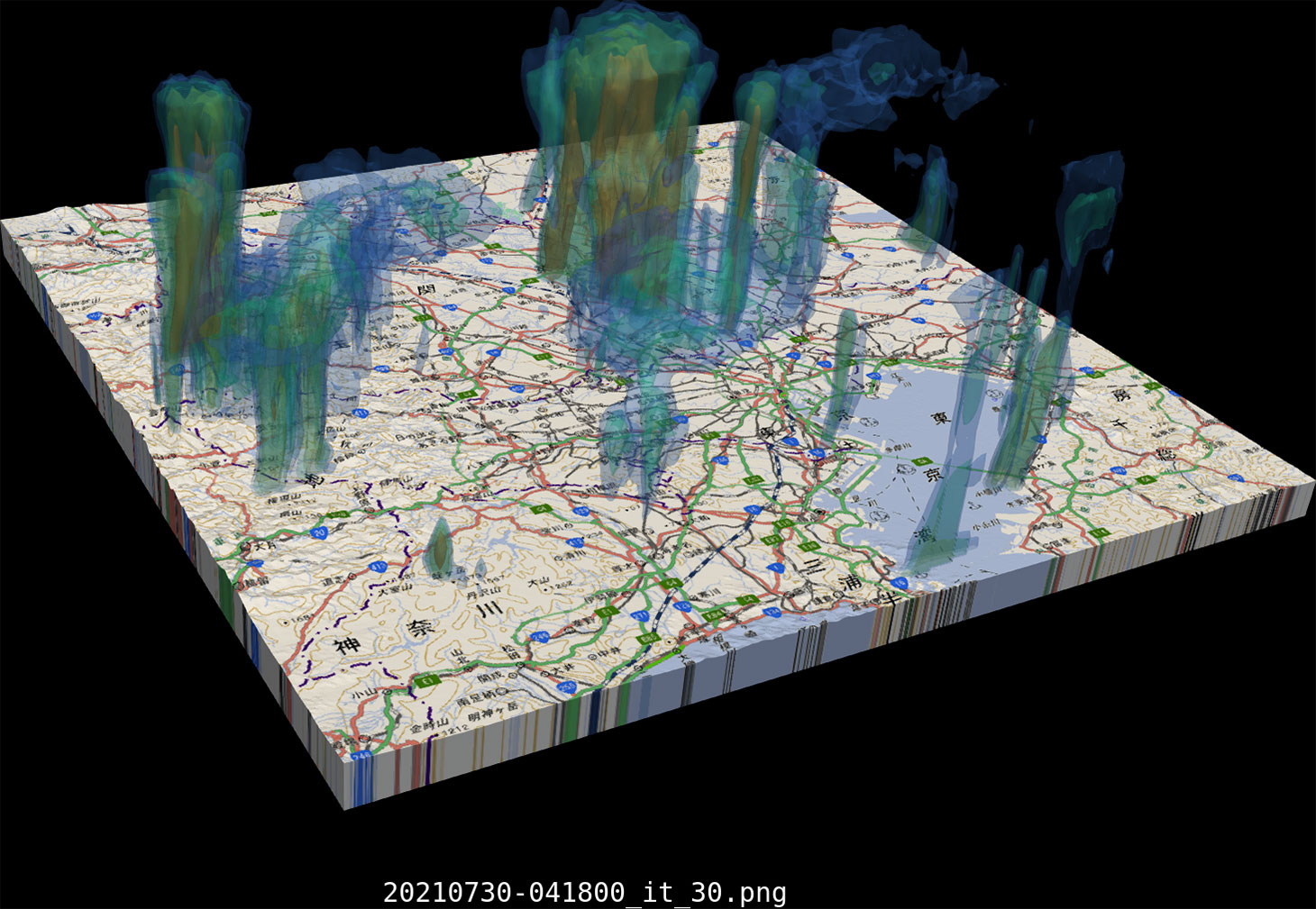
Figure: Bird's-eye view of 15-minute forecast rain distributions ,initialized at 04:18:00 UTC, July 30, 2021. (Map data: GSI, Japan)
September 22, 2023
The research achievement of real-time 30-second-refresh Heavy Rain Forecast During Tokyo Olympics and Paralympics Using Fugaku by Takemasa Miyoshi, Team Leader, Data Assimilation Research Team, and Hirofumi Tomita, Team Leader, Computational Climate Science Research Team, RIKEN Center for Computational Science (R-CCS), have been nominated as a finalist for the Gordon Bell Prize for Climate Modelling from the Association for Computing Machinery (ACM). The Gordon Bell Prize is given for outstanding achievement in high-performance parallel computing in a given year.
Scientists show way to mitigate extreme weather events
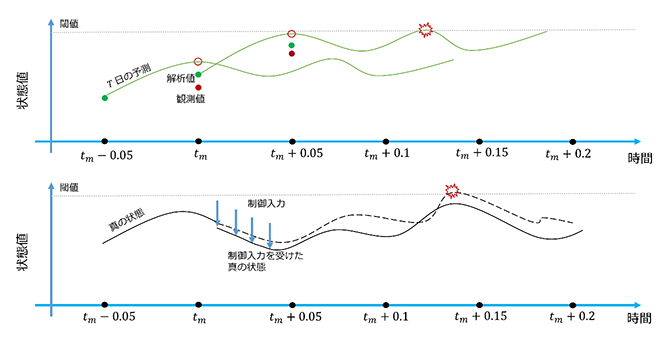
June 22, 2023
RIKEN scientists have demonstrated a way to make small tweaks in weather systems as a means to prevent, or at least reduce, the severity of extreme weather events such as torrential rain. They did this by taking advantage of the chaos that is inherent to such systems. Through this work they hope to develop ways to prevent extreme weather events, which have become more common in recent years.
According to Takemasa Miyoshi, the leader of the research group, "It is generally accepted that we need to learn how to predict severe weather events so that we can prepare for them, but it would also be desirable to be able to mitigate the events themselves. That's what we are interested in achieving." His group took on this challenge as part of the Japanese government-funded moonshot-millennia program, and in previous published work described the possibility of controlling weather by initiating small changes in it as it forms. At that time, they used the simple Lorenz 63 weather model, which only has a few variables, and showed that it would be possible to induce small perturbations in the system to keep it on one side of a so-called "butterfly pattern."
Chaos theory provides hints for controlling the weather

March 28, 2022
Researchers have used computer simulations to show that weather phenomena such as sudden downpours could potentially be modified by making small adjustments to certain variables in the weather system. They did this by taking advantage of a system known as a "butterfly attractor" in chaos theory, where a system can have one of two states-like the wings of a butterfly-and that it switches back and forth between the two states depending on small changes in certain conditions.
RIKEN and JAXA collaborate to offer real-time rainfall forecasts
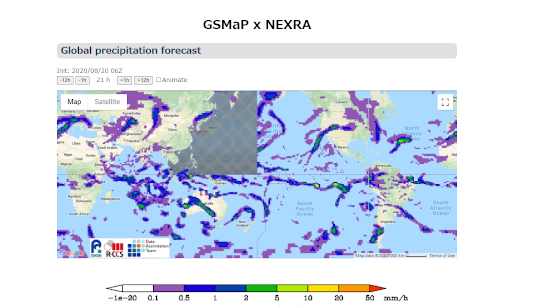
August 20, 2020
Researchers from RIKEN, Chiba University, the University of Tokyo, and the Japan Aerospace Exploration Agency (JAXA) have used a combination of satellite data and supercomputer simulations to offer five-day rainfall forecasts over the Internet covering the globe. The new system combines a variety of techniques, particularly precipitation nowcasting and numerical weather prediction, to come up with predictions that rely on the strengths of the different techniques to come up with forecasts that are accurate on a variety of time scales.
Himawari-8 data assimilated simulation enables 10-minute updates of rain and flood predictions
January 18, 2018
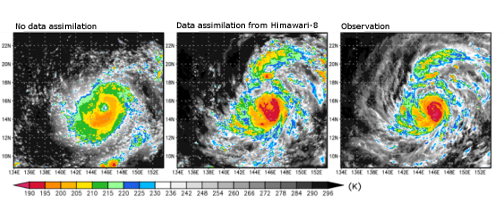
Simulation of Typhoon Soudelor at 22:00 on August 2, 2015
Using the power of Japan's K computer, scientists from the RIKEN Advanced Institute for Computational Science and collaborators have shown that incorporating satellite data at frequent intervals-ten minutes in the case of this study-into weather prediction models can significantly improve the rainfall predictions of the models and allow more precise predictions of the rapid development of a typhoon.
New system promises more rapid and accurate prediction of rainfall
July 4, 2017
Example of rainfall forecast made ten minutes earlier using 3D nowcasting on experiment basis.
Using a powerful technique known as "3D nowcasting," an international team including scientists from the RIKEN Advanced Institute for Computational Science (AICS) has begun to provide, on an experimental basis, forecasts that predict the likelihood of precipitation in a given location ten minutes in advance. The group will use the system to determine if the experimental forecasts, based on data that is updated every 30 seconds, could be used to prevent damage from torrential rains. The work, conducted by a team including researchers from AICS as well as the National Institute of Information and Communications Technology (NICT), Tokyo Metropolitan University, and Osaka University, uses a combination of phased-array radar and computer algorithms that make predictions based on data from the radars.
K computer and high-tech weather radar come together to predict sudden torrential rains
August 9, 2016
Simulating sudden torrential rains with the K computer.
Today, supercomputer-based weather predictions are typically done with simulations that use grids spaced at least one kilometer apart, and incorporate new observational data every hour. However, due to the roughness of the calculations, these simulations cannot accurately predict the threat of torrential rains, which can develop within minutes when cumulonimbus clouds suddenly develop. Now, an international team led by Takemasa Miyoshi of the RIKEN Advanced Center for Computational Science (AICS) has used the powerful K computer and advanced radar observational data to accurately predict the occurrence of torrential rains in localized areas.
Largest ensemble simulation of global weather using real-world data
November 11, 2015
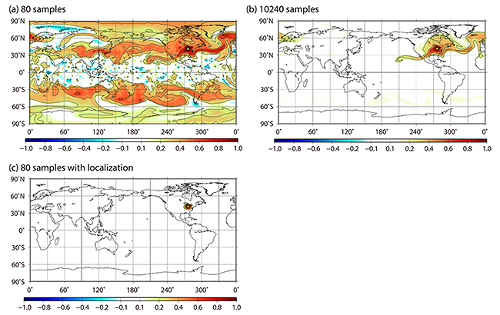
Horizontal maps of real atmosphere autocorrelations using NICAM-LETKF. ©IEEE 2015
When performing numerical weather predictions, it is important that the simulation itself be accurate, but it is also key for real-world data, based on observations, to be accurately entered into the model. Typically, weather simulations work by having the computer conduct a number of simulations based on the current state, and then entering observational data into the simulation to nudge it in a way that puts it closer to the actual state. The problem of incorporating data in the simulation-data assimilation-has become increasingly complex with the large number of types of available data, such as satellite observations and measurements taken from ground stations. Typically, supercomputers today spend an approximately equal amount of time running the simulations and incorporating the real-world data.
K computer runs largest ever ensemble simulation of global weather
July 23, 2014
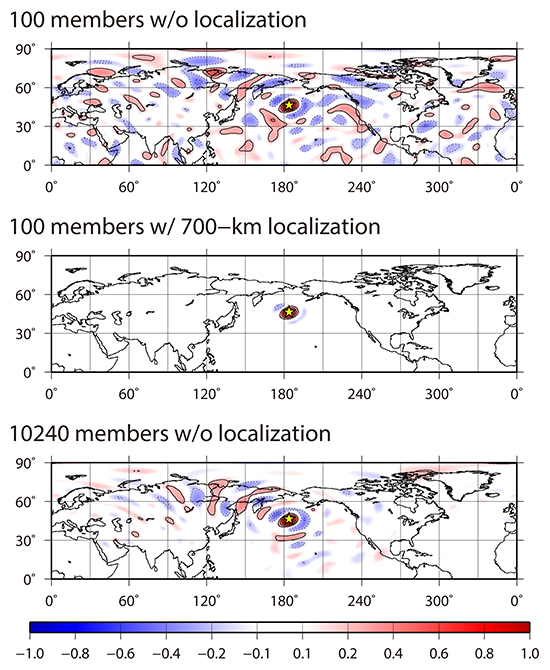
Top: using a 100-member ensemble; Middle: applying a localization function to the top figure; Bottom: using a 10240-member ensemble.
Ensemble forecasting is a key part of weather forecasting today. Computers typically run multiple simulations, called ensembles, using slightly different initial conditions or assumptions, and then analyze them together to try to improve forecasts. Now, in research published in Geophysical Research Letters, using Japan's flagship 10-petaFLOPS K computer, researchers from the RIKEN Advanced Institute for Computational Science (AICS) have succeeded in running 10,240 parallel simulations of global weather, the largest number ever performed, using data assimilation to reduce the range of uncertainties.

